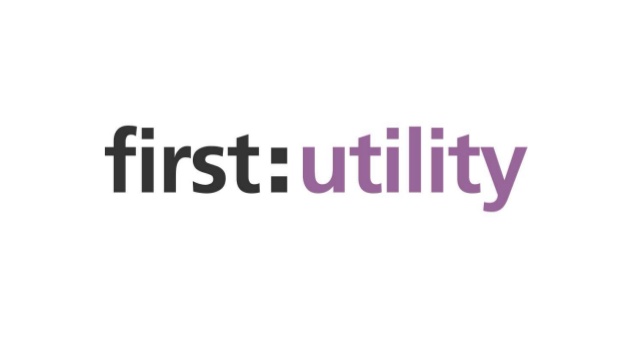You Ask, We Answer: A Comprehensive Review of NGINX Software
Here at Sirius, we often get asked, "What is the ultimate verdict on NGINX? Is NGINX Open Source truly ready for enterprise production, or is NGINX Plus necessary?" This is a very good question, and one that deserves a clear, honest answer. We understand the need to know the true technical capabilities and financial implications of any technology choice, as it's a decision a business will have to live with for years.
We want to be upfront: NGINX is celebrated globally as a foundational piece of modern internet infrastructure. Its high-performance, event-driven architecture makes it the gold standard for high concurrency and static asset delivery. However, relying solely on the "free" NGINX Open Source (OSS) version for critical applications can mask significant hidden operational costs and stability risks. This review will honestly explain the architecture, versatility, critical limitations, and commercial trade-offs of the NGINX ecosystem, helping you understand its Total Cost of Ownership (TCO) and decide what is best for your specific needs. We aim to be fiercely transparent, allowing you to make the most informed decision possible.
Section 1: Architectural Strengths and Performance Foundation
NGINX, or "engine x," is distinguished by its architectural design, which underpins its versatility as a high-performance web server, reverse proxy, load balancer, content cache, and API gateway.
1. Event-Driven Architecture (EDA) for Efficiency
NGINX employs a sophisticated event-driven, non-blocking architecture, differentiating it from older, synchronous process-based servers like Apache HTTP Server.
- Concurrency: This non-blocking model allows NGINX to efficiently handle hundreds of thousands of concurrent connections on modern hardware using a small number of worker processes.
- Resource Management: The predictable process model maximizes resource density, making NGINX suitable for high-density, cloud-native deployments and a consistently popular Docker image.
- Operational Continuity: NGINX supports a binary upgrade process that eliminates the need for maintenance windows during software updates, ensuring zero dropped connections or service interruption. Configuration changes can also be gracefully reloaded by signaling the master process, a feature many users execute multiple times per second with negligible resource impact.
2. Core Functions and Versatility
NGINX's modular architecture allows it to function as a unified traffic control point (Application Delivery Controller, ADC).
- Reverse Proxying: It acts as an intermediary, supporting proxying requests to various application servers using protocols such as HTTP, FastCGI, uwsgi, SCGI, and memcached. This versatility allows organizations to manage traffic for both legacy monolithic applications and new microservices.
- Container Role: NGINX serves as the underpinning for numerous Kubernetes Ingress Controllers and is widely adopted using the sidecar pattern within Docker deployments. The sidecar pattern allows organizations to offload cross-cutting concerns (like proxy caching and SSL/TLS termination) from application code to enforce standardized performance and security policies.
Section 2: Critical Problems and Operational Fragility (The Disarmament Principle)
To maintain credibility, it is vital to acknowledge potential weaknesses or problems associated with a technology. The market-leading efficiency of NGINX OSS is exquisitely sensitive to non-ideal operational conditions and configuration errors.
1. Vulnerability to Blocking Operations
The core performance strength (the single-threaded event loop) is also its vulnerability.
- Asynchronous Impedance Mismatch: If an operation within a worker process becomes synchronous (e.g., slow disk access, inefficient logging, or complex CPU tasks), the entire worker is paralyzed (blocked). Since a single worker may manage thousands of connections, one blocking event can stall service delivery for all clients handled by that process.
- Configuration Anti-Patterns: Disabling proxy buffering (
proxy_buffering off) is a detrimental misconfiguration often intended to reduce latency, but it forces synchronous proxying, subverting the non-blocking architecture and simultaneously rendering features like caching and rate limiting inoperable.
2. Configuration Complexity and Steep Learning Curve
NGINX demands a high degree of precision; mistakes that are minor in other servers can be catastrophic here.
- Fatal Resource Ceiling: The operating system's maximum number of File Descriptors (FDs) often defaults to a low limit (e.g., 1024). Because NGINX consumes multiple FDs per proxy request (2-3 FDs per connection), failure to raise this limit using
worker_rlimit_nofilecauses hard connection failures at high concurrency. - Dynamic Content Tax: NGINX does not natively handle dynamic content well; it must delegate to external processors (like PHP-FPM), requiring complex Inter-Process Communication (IPC) setup, which increases architectural sprawl and configuration burden.
- Security Risks: Administrators must continuously adhere to security best practices, such as strictly restricting access to the status metrics page (
/nginx_status) to trusted internal networks, as this endpoint provides internal visibility into server utilization.
Section 3: The Commercial Trade-off: Open Source vs. Plus Features
The decision between NGINX Open Source (OSS) and the subscription-based NGINX Plus is critical, especially for organizations using dynamic container orchestration. NGINX Plus provides essential operational agility features that are unavailable in the free version.
1. Operational Reliability and Failure Detection
NGINX OSS relies only on passive failure detection (marking a server down only after a client request has failed).
- Active Health Checks (Plus Feature): NGINX Plus includes built-in Active Health Checks, which proactively monitor backend servers and preemptively remove unhealthy servers from the load balancing pool before they are assigned a client request. For mission-critical systems, this proactive capability translates directly into superior Quality of Service (QoS).
2. Dynamic Configuration Agility
In high-velocity Kubernetes or Docker environments, application pods scale up and down rapidly, leading to constant endpoint changes.
- OSS Limitation: NGINX Open Source's core architectural limitation is that configuration changes require a graceful reload. Frequent reloads introduce operational instability, resource spikes, latency, or dropped connections, especially for long-lived connections (e.g., WebSockets).
- NGINX Plus API: NGINX Plus addresses this by providing a RESTful API for dynamic upstream reconfiguration. This allows platform management tools to adjust backend pools without requiring a process restart or incurring memory spikes, mandating the adoption of NGINX Plus in production-grade container environments.
3. Total Cost of Ownership (TCO) Justification
While NGINX OSS is "free" in terms of licensing, the TCO for enterprises is overwhelmingly driven by labor and risk.
- Hidden Labor Cost: Relying on OSS requires expensive internal engineering time (DevOps or SRE staff) to custom-build, deploy, and maintain third-party solutions to replicate features like dynamic configuration and active health checks.
- Break-Even Point: An organization utilizing an NGINX specialist (average hourly wage of $53) reaches the financial break-even point against the cost of NGINX Plus Basic support (~$2,500 annually) after only 47 hours of internal, unbudgeted labor.
Section 4: Comparative Context (Reviews and Versus)
1. NGINX vs. Traditional Servers (Apache and HAProxy)
| Rival | Architecture | Performance Trade-off |
|---|---|---|
| Apache HTTP Server | Process-Driven/Synchronous | Higher Resource Cost: More CPU/memory consumption per connection under load. |
| HAProxy | Event-Driven (Specialized) | Extreme Concurrency: HAProxy demonstrates better stability and less degradation at extreme concurrency levels (e.g., 50,000+ concurrent connections), potentially outperforming NGINX by nearly 20%. |
NGINX is generally superior to Apache for static content delivery and high-concurrency scenarios due to its event-driven model. However, Apache is favored for legacy applications or where decentralized .htaccess configuration overrides are required.
2. NGINX vs. Cloud-Native Proxies (Envoy and Caddy)
NGINX faces competition from modern proxies specifically designed for dynamic microservices.
| Rival | Configuration Model | Agility Trade-off |
|---|---|---|
| Envoy Proxy | Fluid, Dynamic (xDS API) | Service Mesh Focus: Often preferred for volatile internal Service Mesh (East-West) traffic due to highly fluid configuration, unlike NGINX's traditional reliance on predetermined files. |
| Caddy | Native JSON/RESTful API | Automation Champion: Provides built-in automatic HTTPS (TLS certificates) and atomic, hitless dynamic reconfiguration natively in its open-source core, reducing operational friction. |
NGINX remains the dominant choice for stable, high-performance North-South (edge) traffic, while modern proxies like Envoy or Caddy often handle the volatile internal East-West traffic.
Section 5: Strategic Recommendations
The decision to adopt NGINX should balance architectural performance with operational requirements.
Recommendation 1: Adopt NGINX Plus for Production Container Environments. It is strongly advised to migrate critical production traffic handled by Kubernetes Ingress Controllers or API Gateways to NGINX Plus. The reliance of NGINX OSS on configuration reloads for dynamic endpoint discovery creates inherent operational instability and latency spikes in high-velocity container clusters. The NGINX Plus API and dynamic DNS resolution features mitigate this risk, transforming the subscription cost into an essential operational stability investment.
Recommendation 2: Standardize NGINX as the Sidecar Proxy. Organizations should leverage existing Docker expertise by standardizing the NGINX sidecar pattern across microservices. This efficiently offloads cross-cutting concerns—such as caching, SSL termination, and rate limiting—from application code, allowing platform teams to enforce consistent policies without hindering development velocity.
Recommendation 3: Align Support Tier with Service Level Objectives (SLOs). For systems with demanding SLOs, enterprises should adopt the Enterprise Premium support tier. The annual cost increase is justified as a risk mitigation strategy, providing access to 24/7 critical support with a guaranteed 30-minute response time.
The Open Source Managed Path, leveraging specialized Open Source service providers, is the most financially optimal solution for organizations committed to architectural freedom, as it eliminates proprietary software licensing costs while providing 24/7/365 SLA-backed managed services that negate the high labor and risk costs associated with self-management.
















































